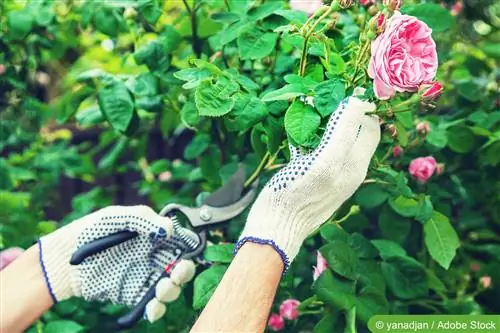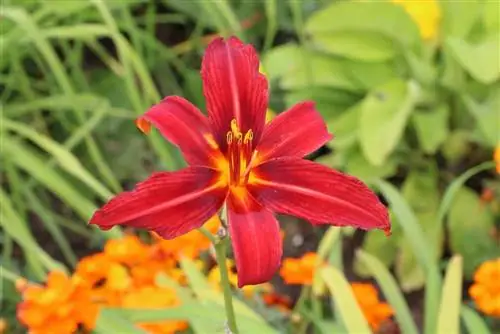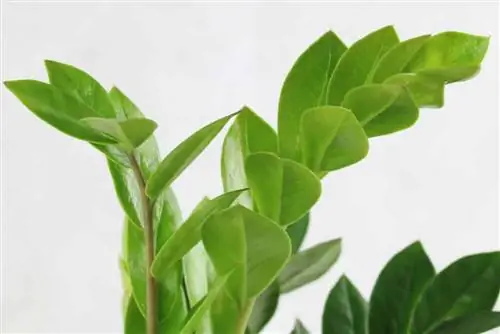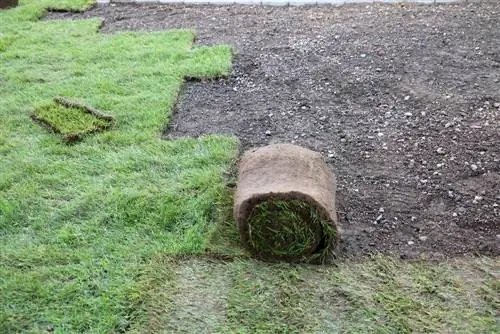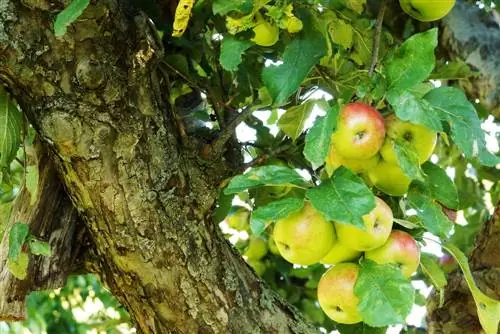- Author admin [email protected].
- Public 2023-12-17 03:39.
- Last modified 2025-06-01 06:48.
Roses are popular in every garden. They are also known as queens among flowers. You can notice the scent from afar. Countless colors and types of roses can be grown and even bred in your own garden. Their care requires attention all year round.
Sorted by quarter, the most important care measures can be summarized as follows:
Rose care in the first quarter
- Check winter protection
- removing too much snow
- Removal of winter protection
- first fertilization with rose fertilizer
Rose care in the second quarter
- Accumulation removal
- Loosening the soil
- Cutting the roses
- Weeding
- Mulch layer with bark mulch or horn shavings
- Loosening the soil around the rose
- watering moderately
- Check whether there is a pest infestation
- Removal of wild shoots
- control pests if necessary
- remove dry and wilted leaves
Rose care in III. Quarter
- Loosening the soil
- Supply of water
- Pruning (roses bloom once)
- Give climbing roses support by tying them up
- Cutting the once blooming climbing roses
- Check for illness and take action
- Fertilization with potassium
Rose care in the fourth quarter
- remove dry or diseased leaves
- Planting roses
- Winter protection
- piling up the earth
- Checking winter protection
- water something
Now the care instructions and the care tips in detail. Started with finding the right location and planting. This is followed by regular care and cutting. Finally, there are tips for refining, propagating and overwintering.
Location and planting
Important decisions have to be made here. The choice of location is important for the growth of the roses and also for their susceptibility to diseases. The following locations are ideal:
- sunny
- enough space
- East and west exposure (there is a risk of heat build-up when facing south)
- humus-rich loose soil
- A place under trees is not recommended
Now that this question has been clarified, the floor needs to be prepared accordingly. A commercially available plant substrate is ideal for this. The substrate should meet the following properties:
- nutrient buffering
- Stabilization of nutrient content
- constant pH value
- high pore volume
- low s alt content
- without weeds
- no substances that damage roses or other plants
- excellent water capacity (perfect liquid delivery)
- high water absorption
- good swelling ability
- Structural stability
It is ideal if you have a pH value of 6 to 7. It must be ensured that the liquid can flow freely to avoid water stagnation. A pH value soil tester enables the hobby gardener to determine this. Such a test is offered online for less than 5 euros. The implementation is incredibly easy.
Rose planting
- Roots of the roses are exposed
- best planting time October - November (good rooting)
- alternative planting time in March
- Roots must not dry out before planting
- (Do not store in direct sunlight during planting)
- Water the roses for at least 5 hours in a large container
- Digging the small planting pit: diameter 40 cm, depth 5 - 10 cm
- Loosening the soil in the planting hole
- Refining point at least 5 cm below the surface of the earth
- Add rose fertilizer directly into the pit
- Shortening the roots to 15 - 20 cm with secateurs
- Inserting the roses
- Carefully fill in rose soil around the roots
- Move the plant again so that the soil reaches the individual branches
- Press the soil firmly
- form a small dam around the rose
- pour on
Continuous care and rose pruning
All year round, in order to be able to admire the roses in their full splendor, care measures such as weeding, loosening the soil, watering and preventing pest infestation must be carried out. Cutting roses depends on the species. For gardeners, a safe time to begin cutting is when the forsythia is in bloom. All shoots of the floribunda rose are cut back vigorously. It should be noted that at least three to a maximum of five buds are preserved. The cut is made diagonally downwards. Frozen and dry branches are also removed. Small shrub roses, also known as ground cover roses, are pruned vigorously, best with hedge trimmers. They are very robust and then reproduce excellently. With climbing roses, all long shoots are cut off and the crown is thinned out. For roses that bloom more often, frequent pruning stimulates the formation of new flowers. However, roses that have bloomed once should only be thinned out once every three years.
Refine, multiply and overwinter roses
Refining
- in summer
- Cutting the branches
- Remove leaves, thorns and eyes on stems
- Cut pocket into the stem
- Put eye in pocket
- fix
- cut wild shoots above the graft in spring
Propagation
- Cut cuttings in late June to early August
- Removal of shoots that have just bloomed
- Cutting under the 5th eye
- Removing flowers
- Cut off the leaves except for the top leaf
- Place cuttings in prepared soil
Cover
- Moistening the soil
- If the weather is constant, remove the cover during the day
Wintering
It is important to ensure that the roses are well protected. Because of air circulation, plastic bags should not be used for covering. A small wall of earth is formed around the rose, the so-called heaping. The soil should be shoveled between 20 - 25 cm around the stem. Particular emphasis must be placed on protecting the crowns. These are very sensitive to light.
Buying roses - tips from the editors
- choose bare root roses in autumn
- Container roses are expensive
- Note the quality seal of the General German Rose Novelty Testing (ADR)
- Check list of more than 150 tested roses
- note firm root ball
- choose resistant rose varieties
- Branching with small white roots
It is cheapest to buy the plants from the gardener. You can also get advice there if you wish. If you decide to purchase online, you must pay close attention to the terms and conditions, exchanges and other information.
What you should know about rose care in brief
A good location must be chosen for particularly beautiful roses. They need to be given a lot of care. The first decisions must be made when purchasing the seedlings or seeds. If all of these tips are followed, you will enjoy the splendor of roses all year round. If you follow a few basic rules when caring for roses, you will notice that it is not that difficult. Certainly there are some more sensitive varieties that are more susceptible to diseases or pests, but this is not the rule. Most types of roses, as well as climbing roses, are absolutely easy to care for and are an asset to any garden - no matter how small it is!
Caring for roses in winter
There is the least amount of work to do when it comes to caring for roses in winter, when you just have to shake the snow off the shoots so that they don't break off. This is particularly important for shrub and standard roses. At the end of March you can remove the frost protection measures and provide nutrients with special rose fertilizer.
Caring for roses in spring
Dipping takes place at the beginning of April and as soon as the forsythia blooms, it's time to prune the roses. Now the soil must also be loosened and weeds removed. If you like, you can apply the mulch layer now, but don't forget the horn shavings. Now is also the time to spray preventatively against rose diseases. Wild shoots must be removed in May! The soil and mulch layer must be loosened. The first pests may appear.
Rose care in summer
Specific countermeasures must be taken. In June, soil care, wild shoots and checking for pests are also important. Any wilted material is removed regularly. July is similar. But here the summer pruning is added for shrub roses that bloom once. The long shoots of the climbing roses also need to be tied. In August, sufficient water often needs to be provided in addition to normal irrigation. Climbing roses need to be pruned once they bloom. Potassium fertilization is important in September. The soil is no longer cultivated. Controlling for fungal diseases is now essential. Remove affected plant parts!
Rose care in autumn
October is the month for planting roses. Otherwise the plants will be quieter. All that remains is to remove diseased leaves. Winter protection is applied in November and piled up at the end of the month. That's actually it. In December, protection can be increased again if necessary.

